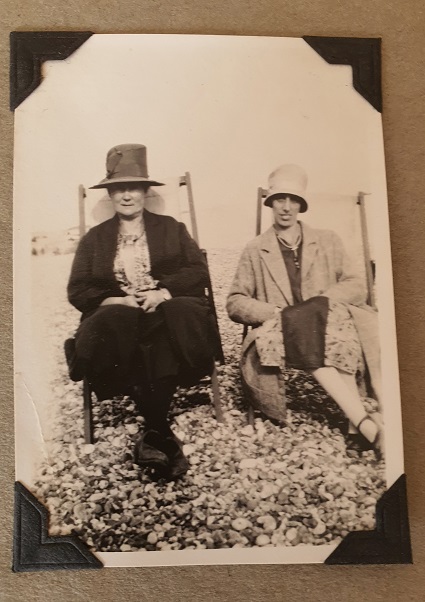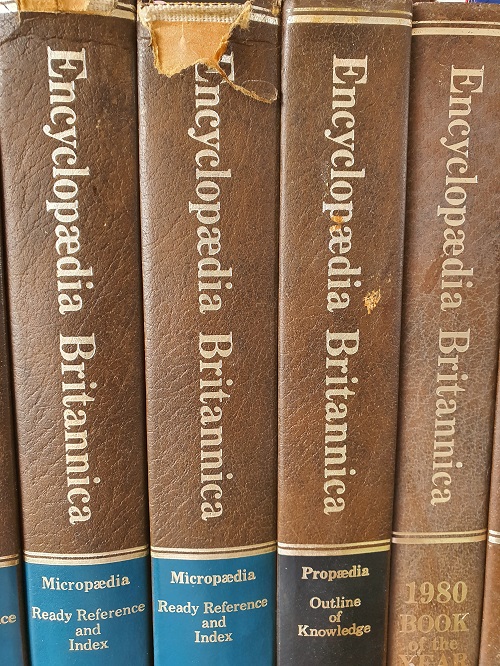As you continue with your family history journey, and compile a large collection of books, documents and photographs, it is important to learn how to store these documents safely.
One of the best ways of storing family history documents is to organise these documents into photographs, books and other documents first, and then to transfer them to acid-free boxes and photograph albums to ensure these precious documents are preserved for future generations.
How To Organise Documents and Photographs
There are many ways of organising any paper documents that you collect during your research journey. One way is to sort them by the name of the person they relate to. Another option is to sort papers by surname, and keep all the documents together in an archival file folder or acid-free storage box.
It is always important as you go through your collection to always carefully remove paper clips, staples, and/or any other metal. Paper clips can cause the paper to discolour, and can cause irreparable damage to the document as, if you are not very careful, clips can cause the paper to tear.
How to Store Photographs
If you have been given many boxes containing old photographs and papers, you may find that it takes a long time to organise them all, and that it cannot be completed in one afternoon. It is prudent to organise the documents by the style of documents.
You could, perhaps, organise all your photographs first, and then move on to documents such as birth, death and marriage certificates, and then any other miscellaneous documents.
It is best to try to keep all photographs in one place and move them into acid-free storage boxes. If you have many old photographs, you may also decide to invest in an acid-free album, which will help to preserve the photographs for future generations.
If you are placing your photographs into an album, you can use corner mounts when placing them into the album. Corner mounts make removing the photograph from the album much more straightforward, and prevent damage being done to the photograph.

If you wish to place your photographs into photo pockets, you should not use ordinary plastic wallets, however, as they contain chemicals which can damage documents over time.
These acid-free photo pockets can be purchased from preservation materials suppliers such as Pockets and Binders, who sell pockets to take from 1 to 20 photographs, depending on your requirements and the size of the photographs.
If you do not wish to place photographs in an album, another option is to place them into acid-free envelopes. These envelopes are designed to keep out dust and light, which can be harmful to photographs.
Many photographs can fade if left in sunlight, as I have discovered to my cost. If you wish to keep photographs on display, it is best to invest in a UV-resistant glazing or by spraying a coating over existing glass using a UV-resistant aerosol.
If you are currently storing your old family photographs in the garage, it is best to move them inside the house so that the temperature can be better controlled.
How to Store Books
Most books should be stored upright to avoid damaging the spine, but some books, such as folio books, should be stored horizontally because these books are larger and quite heavy.
You can store folio books on top of each other, but you must ensure they are not stacked too high to avoid damaging the books on the bottom.
If you are placing books into a storage box, it is best to store the books upright. If you have more books than you have room for, you should refrain from placing books on top of upright ones.
Although books should not be packed so tightly together that attempting to remove one could risk damaging them, they should be stored quite close together so that they can support each other.
Handing Family History Documents Down Through the Generations
If you wish to hand down your precious collection of documents and photographs through the generations, it is best to invest in a good quality acid-free binder to ensure that your precious certificates, photographs, books and documents are safe.
Where (And How) to Store Documents and Photographs
Documents should not be placed in an ordinary cardboard box because leaving them in a box like this will result in the documents becoming discoloured and damaged over time.
You should not place documents near to a radiator because heat could also damage them. Heat causes documents to age more quickly, and can cause them to become brittle.
If you wish to keep a very old document at home, you should use a strong acid-free storage box that is especially designed to prevent damage to rare, old, or fragile documents. A box can also be used to hold photographs, diaries and periodicals. It would be prudent to label the boxes so that you know what is in each box, and which family member(s) they relate to.
As long as you use appropriate protective storage such as acid-free envelopes and boxes, documents can be stored in drawers.
Leave Enough Room For Your Collection To Grow
As you continue on your family history journey, and find more documents, books, and photographs to add to your collection, you must ensure that you leave more room wherever you store your documents so that you can easily add to your collection. Over the years my family history collection has grown substantially, and I have found that I have had to dedicate a whole bookshelf to all the documents, newspaper clippings, and photographs I have collected.
How To Store Documents Digitally
One other way of storing family history documents, and this is especially good for people with little space, is to upload documents and photographs to your computer. This is also prudent if another family member has some photographs they would like to share with you, but would like to take them home with them rather than giving them to you.
Not only does transferring the documents to your computer save space, it also makes it easier to share documents with other family members who are not able to visit. These files can be updated at any time. If you choose to store documents digitally, however, it is vitally important to ensure you backup regularly, and to even store documents in cloud-based storage. That way, even if the worst happens, your precious photographs and documents are safe.
How to Store Audio Recordings
If you have any audio recordings on cassette or other media, these can be transferred to MP3, but some of the quality of the original recording could be lost. It is probably better to let a professional handle this side of things for you, but please be aware that going down this route can be expensive.
How To Handle Documents
You should handle fragile documents as little as possible to avoid causing further damage to them. When handling a document, you should always ensure that your hands are clean, and wear gloves if it is especially unique or fragile. It is best to use two hands when handling a document so that it is fully supported.
You should never fold or roll documents unless absolutely necessary – you should always, wherever possible, to store documents flat rather than folded because folding a document makes it more prone to damage when it is unfolded.
You should never attempt to remove books from a bookshelf by their spine, and it may even be prudent to move other nearby books to make accessing them less difficult. I must confess that I was guilty of this years ago, and as a result, the spine of one of my books has become damaged as you can see from the photograph.

Ever since this happened, I always ensure that I remove the books from the shelf more gently and carefully to ensure this never happens again. It is also prudent to ensure that heavy books are supported underneath.
If you wish to access a book, it is best to place it on a book support to fully support the spine. You should always use book supports in a way that best suits the book you are using. You can always adjust the supports or add more if you need to.
It is best to wear gloves where possible when handling photographs to avoid leaving fingerprints on photographs and negatives.
